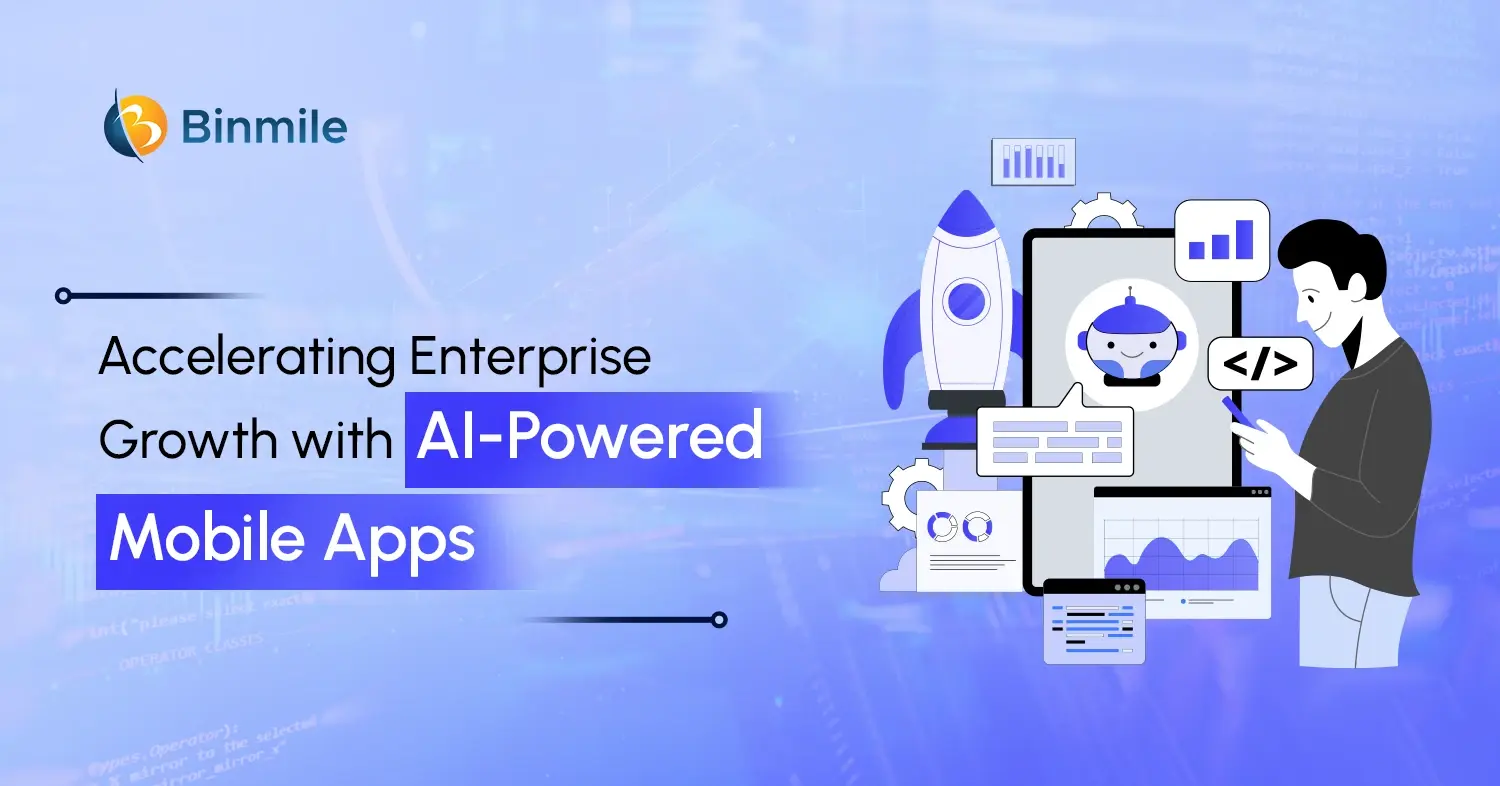While the world of business programming has evolved at its own pace, choosing the right architecture for web and mobile app development services can be a difficult decision. Should you use functional programming or microservices as the foundation for a web or mobile application? Deciding this depends on several factors, including the size and complexity of your project, how quickly it needs to be completed, and the level of scalability required.
Functional programming is a programming paradigm that accentuates the evaluation of mathematical expressions rather than the execution of commands. Microservices is an approach based on breaking down an application into small, independent services, which can be scaled independently from one another.
Although functional programming is typically more cost-effective in the short term, microservices can save money in the long run through easier scalability and maintenance. Ultimately, your decision should take into account the size of your project, the desired level of scalability, and your budget.
By considering these factors, let us help you make an informed decision on which web and mobile app development service best suits your business needs.
All About Functional Programming
Programs written in Functional Programming evaluate expressions rather than execute instructions. It uses functions as the main unit for computation, which makes it ideal for applications where data needs to be processed and stored quickly. When used in web application development services, functional programming allows developers to create applications faster and with fewer bugs.
In addition, you don’t need to keep track of variables or their values, as the program’s code automatically manages these. Because of this automatic management, extra effort is not needed to debug programs written in a functional programming language.
Function composition also enables efficient reuse and modularity, which make it easier to modify programs quickly and apply changes across a large codebase. All these features help make Functional Programming an advantageous choice for organizations such as mobile app development companies or software outsourcing companies in USA.
Benefits of Functional Programming for a Business

- Increased Productivity: Functional programming can increase productivity by eliminating the need for rewriting code or debugging in custom web app development. By using a declarative style of programming, developers can easily and quickly express their intent while writing code.
- Reduced Maintenance Costs: Since functional programming is more concise, the code is easier to read and maintain. This reduces the cost of maintenance and debugging, as well as the cost of hiring developers to work on the code.
- Improved Scalability: Functional programming is highly scalable, allowing for quick and easy adjustments when the business needs to scale up or down.
- Enhanced Security: Functional programming provides enhanced security as it reduces the possibility of bugs due to its declarative style. This also reduces the chances of malicious code injections.
- Improved Performance: As functional programming is focused on minimizing side effects, applications that are written using this style of programming tend to be more efficient and perform better.
Also Read: Top Benefits of Cloud ERP
Microservices – A Brief Study
A microservice is a type of software architecture that enables structuring an application as a collection of weakly associated or independently deployable services. This approach provides the agility needed to meet rapid changes in market demands and advances in technology.
As the name implies, microservices are highly modularized and allow for easy scaling and development. Each service is independently built, tested, deployed, and managed with its own lifecycle and different programming languages – all working together as a cohesive system.
It allows organizations such as top web application development companies or top software development companies to make use of cloud computing resources more efficiently, resulting in improved scalability and increased productivity. Microservice architectures are most suitable for applications with complex logic or features that require frequent updates. They are also great for large-scale projects, as they require minimal changes when expanding or upgrading.
Benefits of Microservices for a Business
- Enhanced Scalability: Microservices enable businesses to scale their systems quickly and easily. This is because microservices are designed to be independent, self-contained modules that can be deployed and scaled independently. This allows businesses to add new services or scale existing ones with minimal disruption in microservices web application development.
- Faster Time to Market: With microservices, businesses can quickly and easily deploy new features and services. This is because microservices are designed to be independent, self-contained modules that can be deployed and tested quickly. This allows businesses to respond to customer needs and market opportunities quickly.
- Higher Availability: Microservices make it easier to create resilient and fault-tolerant systems. This is because each microservice can be independently deployed and monitored. This makes it easier to maintain availability and reduce downtime.
- Improved Cost Efficiency: By using microservices, businesses can reduce development and operational costs. This is because each microservice can be independently developed and maintained. This allows businesses to reduce the amount of time and resources required to create and maintain complex systems.
- Increased Security: Microservices make it easier to secure and protect applications. This is because each element in a microservices web application can be deployed, managed, and scaled independently.
Know More: Web Application Development Cost
Functional Programming and Microservices – Similarities
Functional programming and microservices are technology approaches that share some notable similarities:
- Both functional programming and microservices are styles of software development that focus on decomposing complex systems into smaller, independent components. Functional programming encourages the implementation of functions to structure code, while microservices promote the use of small, independently deployable services to perform individual tasks
- Both approaches aim to reduce complexity and increase modularity and reusability
- Both involve delivering software that is composed of smaller services, where each service is autonomous, independently deployable, finely granular, and provides only one purpose
In this sense, the programming of individual services lends itself to the same principles used in a functional programming language – namely, focusing on data transformation rather than manipulating the state. Microservices enable teams to break down complex functionality into simpler functions which makes them easier to build, test, and maintain. Ultimately this helps developers create robust solutions while optimizing performance and scalability.
Function Programming vs. Microservices: How Are They Different?
 Although functional programming and microservices both present powerful solutions for developers, they differ in their implementation and applications. Functional programming is based on pure functions without side effects. This means that the parameter(s) passed into a function are used to get a predictable output with no side effects outside the scope of that function itself. On the other hand, microservices require multiple dependent services working together to produce an overall output, such as an application or website.
Although functional programming and microservices both present powerful solutions for developers, they differ in their implementation and applications. Functional programming is based on pure functions without side effects. This means that the parameter(s) passed into a function are used to get a predictable output with no side effects outside the scope of that function itself. On the other hand, microservices require multiple dependent services working together to produce an overall output, such as an application or website.
Functional programming is based on mathematical functions that take input and produce output without any side effects. By contrast, microservices are a software architecture style that structures applications as a suite of independently deployable, loosely coupled services. Microservices enable an application to be composed of small, autonomous services that communicate with each other through lightweight APIs. Whereas functional programming is a programming style, microservices are an architectural approach.
Even though they both carry benefits in scalability, speed, and service reusability, it is essential to understand the differences between these technologies before deciding which one is right for web development services.
Also Read: Trends of Frontend Web Development
Summing Up
Computing technology has rapidly advanced and brought us several exciting innovations. Two of these advancements are functional programming and microservices. When deciding between functional programming and microservices for web development services, it is important to consider the size of the project first.
Functional programming may be more suitable for small projects as it requires fewer resources and can be completed faster. On the other hand, if you possess a larger application that needs to be highly scalable, microservices may be a better choice.
Binmile is an all-in-one platform ready to help you out with custom software development services tailored to your specific business needs. With expert aid in custom software engineering, Binmile provides you with robust, scalable, and quality web and mobile app development services to improve overall productivity and reach new heights.
Get in touch with app development team today!
Frequently Asked Questions
Functional Programming (FP) is a programming paradigm that treats computation as the evaluation of mathematical functions and avoids changing-state and mutable data. In FP, functions are first-class citizens, meaning they can be passed as arguments to other functions, returned as values from other functions, and assigned to variables.
Key features of Functional Programming include:
- Pure Functions: Functions that always return the same result for the same inputs, with no side effects.
- Immutability: Data is immutable, meaning it cannot be changed after creation. Instead, new data is created through transformations.
- Higher-Order Functions: Functions that can take other functions as arguments or return functions as results.
- Recursion: The primary method of iteration in Functional Programming, where functions call themselves to solve problems.
When selecting a language for microservices, consider factors such as:
- Scalability: Choose a language that can scale with your application’s growth and handle increased workload without sacrificing performance.
- Concurrency and Parallelism: Look for languages with built-in support for concurrency and parallelism to efficiently handle multiple requests and tasks simultaneously.
- Ease of Development: Prioritize languages that offer productivity features, robust tooling, and a supportive ecosystem to streamline development and deployment processes.
- Performance: Assess the performance characteristics of the language, including runtime efficiency, memory usage, and latency, to ensure optimal service responsiveness.
- Compatibility: Ensure compatibility with existing infrastructure, frameworks, libraries, and deployment environments to facilitate integration and interoperability.
- Community Support: Choose a language with a vibrant community, active development, and comprehensive documentation to leverage shared knowledge and resources.









